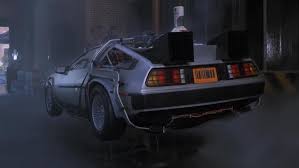The cars of the future

The flying DeLorean from Back to the Future Part 2.
May 11, 2017
As 2015 came and went, many were disappointed to find that Robert Zemeckis’s Back to the Future Part II, was wrong about whether or not there would be flying cars. Although flying vehicles aren’t yet available, self-driving cars are almost here.
There are many companies rushing to be the first to release this groundbreaking product to the public, including most name brand car manufacturers like Nissan, Audi, Mercedes-Benz, Volvo, and even Google.
So how do these cars work? In a nutshell, each vehicle is usually fitted with a GPS unit, an inertial navigation system, and a range of sensors including laser rangefinders, radar, and video.
“It’s cool how they’re able to not hit things in the road even though nobody’s driving,” said sophomore Caireann Sardino. These cars, while using GPS to track their own location, use the built-in sensors to filter data allowing the car to drive the most efficient path, and avoid objects, pedestrians, and other vehicles of course.
Self-driving cars could be the new big thing, but despite the obvious benefits, what dangers could this technology bring? For one thing, automated cars don’t have the ability to infer or make quick decisions like humans can. “It could reduce the amount of people hit by cars,” says sophomore Adam Huntington.
Another possible danger is the fact that people are going to hack or hijack these autonomous cars. “Taxi drivers won’t be needed anymore,”said sophomore Eli Piccone. “Lots of people will be out of a job”. Who knows how this could affect our economy.
The philosophical conundrum of whether this is okay or not might never end so when these self-driving cars are released to the public, what limitations will be placed to help people feel safe? Technological advances can be scary, but the overwhelming odds have these cars being ‘normal’ within a few years. Maybe in a few years we’ll have flying cars, self tying shoes, and hoverboards.

